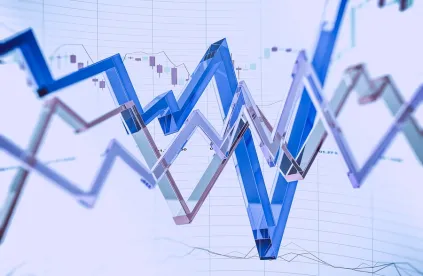Every few years, a new and trendy financial product seems to pop up in our debt markets. Think crypto-currency, EB-5 financing, opportunity zones, fin-tech and crowdfunding. Some of these phenomena stick around for the long haul. Others simply fade away as investors lose interest (which they inevitably do when the returns do not materialize or public interest wanes). One of the newer financial products to hit the markets is “sustainable lending.” Also referred to as “green finance”, the most exciting aspect of this product is its ability to simultaneously produce high returns and generate positive social impact. This innovative combination generates staying power not only among investors, but also among the public at large. In this era of social media, when attention spans are infinitesimal and public opinion is extraordinarily fickle, sustainable lending could be a game changer for us all.
Sustainable lending is a subset of socially responsible investing (“SRI”). The concept of SRI is not new; its roots can be traced back more than two millennia to biblical times. In fact, at its most elemental, SRI is nothing more than a set of religious values that migrated from the edge of recorded history to a modern landscape challenged by climate change, social injustice and increasing poverty.
Today, SRI can be succinctly described as sustainable, responsible, and impact investing. It is a legitimate influence on capital markets and one of the hottest concepts to hit private wealth management in some time. In traditional, more liquid markets (i.e., stocks and bonds), SRI usually falls into two categories: use-based, socially responsible investing or the more forward-thinking “environmental, social and governance” incorporated investing (“ESG”). Use-based, socially responsible investing is easy to visualize – just think of the investor who refuses to invest in a company that utilizes child labor or depends heavily on fossil fuels. ESG, on the other hand, considers environmental, community, other societal and corporate governance criteria in investment analysis and portfolio construction. In other words, potential ESG investors assess non-traditional data to determine which companies are best prepared to compete in our world of dwindling natural resources, climate change, and growing human population.
According to a 2018 trends report by the United States Social Investment Forum (“USSIF”), SRI accounted for $12.0 trillion invested in North America, up 38% from 2016. Much of this growth was driven by asset managers who now consider ESG criteria across $11.6 trillion in assets, up 44% from $8.1 trillion in 2016. The top three ESG concerns for asset managers and their clients are climate change, tobacco and conflict risk. As the USSIF data shows, it is the growth in ESG investing that makes modern SRI a force to be reckoned with in our capital markets. ESG appears to have breached the previously insurmountable chasm between mainstream investing and SRI.
So what does this history lesson have to do with commercial, project and/or real estate finance trends in 2019? To fully understand the breadth and potential of sustainable lending, you need to understand its genesis and popularity among investors. Sustainable lending is not a new phenomenon dreamed up by Wall Street bankers as their next meal ticket. Rather, it is the debt markets’ answer to the convergence of two seemingly disparate worlds: for-profit, capitalistic business and non-profit, charitable endeavors.
More than two hundred years ago, Benjamin Franklin coined a maxim that, while often quoted, has historically played a minor role, if any, in our debt markets: “do well by doing good.” Long before capitalism became the backbone of our economy, Dr. Franklin urged that enlightened and ethical business practices produce more profit in the long run. Notwithstanding this proverb, there historically was little direct relationship between the for-profit and non-profit worlds. Thankfully, the relevant lines have begun to blur and the two worlds have converged in the form of SRI. According to the Global Sustainability Investment Alliance, people are now investing more than $23 trillion internationally in socially responsible ways.
While the majority of SRI activity has historically been on the equities side, the debt markets have seen their share of growth in green and sustainable products. Reliable data demonstrates two important points now embraced by sophisticated lenders. First, investors need not sacrifice returns for increased social value and as such, they are now demanding better performance with bigger social impact. Second, companies focused on ESG metrics and policies are better positioned to repay their debt and increase their profitability. Green bonds, green loans, green banks, and sustainability-linked loans have emerged as viable financing tools increasingly offered by lenders to those individuals focused on both the cost of capital and social impact.
While sustainable lending makes up only a small portion of today’s debt markets, its potential, in terms of both staying-power and breadth, is staggering. Comments such as “[i]f this catches on, it is going to be the next big investment opportunity” and “[t]his is a new world for most financiers and treasury teams” are increasingly common. The topic is popping up even more frequently at professional conferences and cocktail hours. I recently moderated the Business Law Section of the American Bar Association’s first-ever panel on SRI and green lending where the response was overwhelmingly enthusiastic and positive. Our prediction is that SRI (including green lending) will soon go mainstream.
For the next several months, we will be posting on sustainable lending. Our intent is to introduce you to the topic and provide talking points for your next meeting with investors, lenders, borrowers, advisors and colleagues. After all, we all should “do well by doing good.”



 />i
/>i
